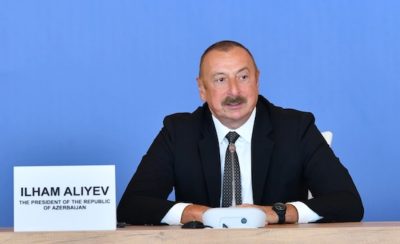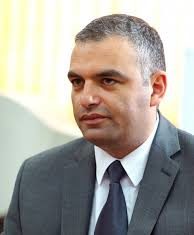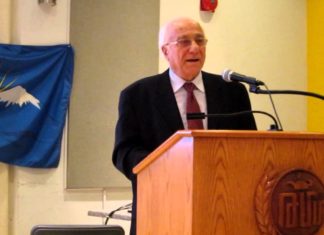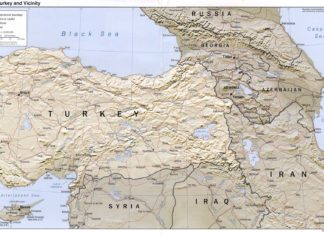By George Bournoutian
I was invited to present a paper at the conference on the Armenians in Poland last year, but the eruption of the volcano in Iceland postponed my visit. I was asked to come this year to examine the Armenian archives in Warsaw and to meet with the scholars who are currently working on Armenian topics.
My knowledge of Polish and my mother’s Polish origins opened numerous doors and I found a treasure trove of Armenian manuscripts, rare books and paintings.
The Armenians of Poland were originally concentrated in Lvov, Kamenets-Podolsk, Zamosc and other cities and, as I have indicated in my writings, had converted to Catholicism in the 17th century. Following WWI, Poland reemerged as a state and Lvov and Zamosc were included within its borders. Unlike the Armenians Catholics in Ukraine (under Soviet rule), Armenian Catholics fared well in Catholic Poland. The Armenian cathedral in Lvov and the various Armenian Catholic churches housed manuscripts, books, paintings, vessels and vestments, some of which had been rescued from the Armenian churches in Ukraine during and after the Russo-Polish War of 1920-21 and were sent to Gdansk and other Polish cities.
Some of the important manuscripts were kept in the University of Lvov. The most important was manuscript no. 58, which contained the travelogue of Simon of Poland (Simeon Lehatsi). The manuscript was examined by Fr. Nerses Akinean of the Armenian Mkhitarist Congregation in Vienna, who copied it and printed it in the official Mkhitarist periodical Handes Amsorya (Fall 1932-Spring 1935). A year later Akinean published the work in a separate volume with Armenian and German titles. The book contained additional data, colophons, glossary, index and an abstract in German. During WWII, at the time of the German occupation of Lvov, the original manuscript disappeared and was presumed lost. Thus, in 2006, when I decided to prepare the first English translation of the book, I had to rely on Akinean’s volume. In 2007, just as my book, The Travel Accounts of Simeon of Poland, went into press, I heard that the original had been found and was to be displayed, for a short time, in France. I made a note of this in my translation.
During my recent visit to Poland, I discovered the secret of its survival. After WW II, when the borders of Poland in the east were absorbed by the USSR, Lvov became part of Ukraine. Realizing the danger, all important Armenian manuscripts, rare books, paintings, vessels and vestments were secretly sent by the Armenian Catholic clergy in Lvov to Wroclaw for safekeeping. Between 1946 and 1949, some of the most important items were sent to the National Library in Warsaw. Among them was manuscript no. 58, bound in light red leather, composed of 198 two-sided, neatly written and very legible folios — just as Father Akinean had described it. I was given special permission to examine it, spent some hours comparing parts of it with Akinean’s copy and found it exactly the same.








